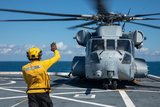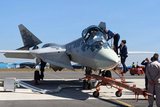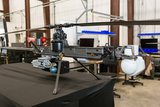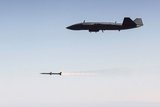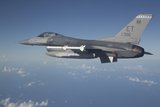Royal Navy Merlin Mk4 ditching kills one crew member
The Merlin Mk4 with its modifications for use by elite forces. (Photo: UK MoD/Crown Copyright)
A Royal Navy helicopter ditching off the coast of Dorset in the UK has cost one service member their life, but two other crew members were rescued and were apparently unharmed after the incident.
The crew were aboard a Merlin Mk4 helicopter undertaking night-flying exercises during training with the aircraft carrier HMS Queen Elizabeth.
The victim has not been named but their immediate family has been informed. The crew member who died was based at Royal Naval Air Station Yeovilton, a station in Somerset.
Related Articles
Safran continues to support UK Merlin helicopters
A ditching is technically different from a crash. The technical definition is actively helpful in adding detail to the course of events, because according to the Civil Aviation Authority, a ditching takes place when there is a “deliberate emergency landing on water”, rather than an “uncontrolled impact”.
The Royal Navy said a full investigation into the ditching would take place and expressed its “great sadness” at the loss of life.
The Merlin Mk4 is generally modified for use by elite forces, most notably the Royal Marines. It can fly at a speed of 160 knots (184mph/296km/h) and has a range of 750 nautical miles. Its modifications include a special fast roping beam that lets special forces out of the main cabin door at speed, for rapid deployment as necessary. These features differentiate the Mk4 physically from the Mk2, which is principally used in anti-submarine combat.
The specialised nature of the Mk4’s modifications suggests that the crew may have been involved in similarly specialised night-flying training when the ditching occurred. The helicopter has not yet been recovered and the recovery is expected to be a long process.
More from Air Warfare
-
![Anduril UK and GKN Aerospace collaborate on British Army ACP bid]()
Anduril UK and GKN Aerospace collaborate on British Army ACP bid
The pair will submit their demonstrator concept for Project Nyx, a development project for the British Army’s Land Autonomous Collaborative Platform.
-
![US Army command’s Picatinny CLIK common lethal drone interface makes progress]()
US Army command’s Picatinny CLIK common lethal drone interface makes progress
The Picatinny Common Lethality Integration Kit is designed to overcome the issue of unique integration methods between lethal payloads and drones as well as avoiding problematic acquisition conditions created by vendor lock.
-
![Australia invests extra A$1.4 billion in MQ-28A Ghost Bat after successful missile fire test]()
Australia invests extra A$1.4 billion in MQ-28A Ghost Bat after successful missile fire test
The investment includes new contracts for six MQ-28A Ghost Bat aircraft, as well as provisional funds to invest in the development of a Block 3 prototype.
-
![US approves potential $4.7 billion missile and air defence system sales to Denmark and Italy]()
US approves potential $4.7 billion missile and air defence system sales to Denmark and Italy
Italy could field the JASSM-ER for its combat aircraft including the F-35, while Denmark has been approved for AMRAAM and an Integrated Battle Command system procurement.
-
![Northrop Grumman to fly new Project Talon CCA by late 2026]()
Northrop Grumman to fly new Project Talon CCA by late 2026
The newly unveiled collaborative combat aircraft looks to strike a balance between capability and cost-effectiveness, according to the company.
-
![MBDA and Lockheed move closer to F-35A Meteor flight tests]()
MBDA and Lockheed move closer to F-35A Meteor flight tests
Following the completion of successful ground tests, one more exercise remains before flight testing can begin.








